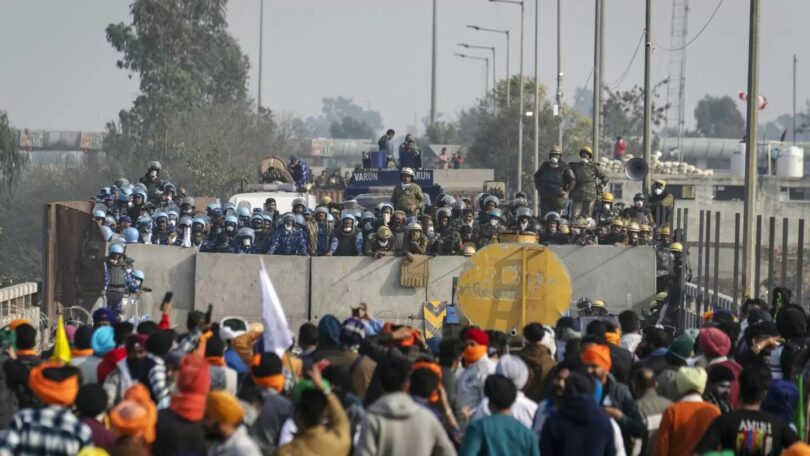Recently, farmers blocked highways and held demonstrations in many rural areas in northern India to protest over a range of grievances that have also led tens of thousands to march toward the capital in tractors and wagons. Farmers in the northern states of Haryana and Punjab held sit-ins near toll plazas on major highways during the strike, supported by some trade unions. Authorities have blocked main roads through concrete and metal barricades to stop farmers’ march, suspended internet services, blocked social media accounts of protest leaders, and used drones to drop tear gas canisters on the protesters in Haryana and Punjab.
The farmers’ protests in India, which began in 2020, were primarily against three new farming laws enacted by the Modi government. The laws aimed to deregulate the agricultural sector by allowing farmers to sell their produce outside government-controlled markets, among other provisions. However, farmers feared that these laws would lead to exploitation by corporations and undermine their livelihoods. The protests gained international attention and were one of the largest and longest-running demonstrations in recent history. The latest protests are the continuation of the months-long formers’ protest held by the Sinkh farmers’ mostly from Indian Punjab and Haryana states in 2021. The Modi government withdrew controversial laws and guaranteed to raise the prices of farmers’ produce mainly food grains and vegetation but did not fulfill its promise over almost two years.
Interestingly, the Modi government has been reluctant to meet formers’ demands as it perceives that Punjab and Haryana farmers are better well off as compared to the farmers in other states. In addition, an increase in commodity prices would lead to nationwide inflation while affecting the overall cost of living in the country. Historically, the Modi government demonstrated resilience in the face of utmost pressure during the months-long protests in the past and did not approve price hikes for over two years.
This is a lesson for our leaders who do not sustain before cartels’ pressure and easily compromise the public interest taking no time in raising prices of daily-use commodities, medicines, and basic utilities. Unfortunately, Pakistani state institutions including DRAP, NEPRA, PPRA, and OGRA argue in support of cartels and pave the way for inhumane increases in commodity prices in the country. This anti-public attitude has turned the country into an unlivable place squeezing the lives of low-income and middle-class communities. It is high time, that Pakistani political parties constitute their study and research groups/caucuses to work and formulate policies on public and governance issues instead of issuing flimsy electoral manifestos in election season.







